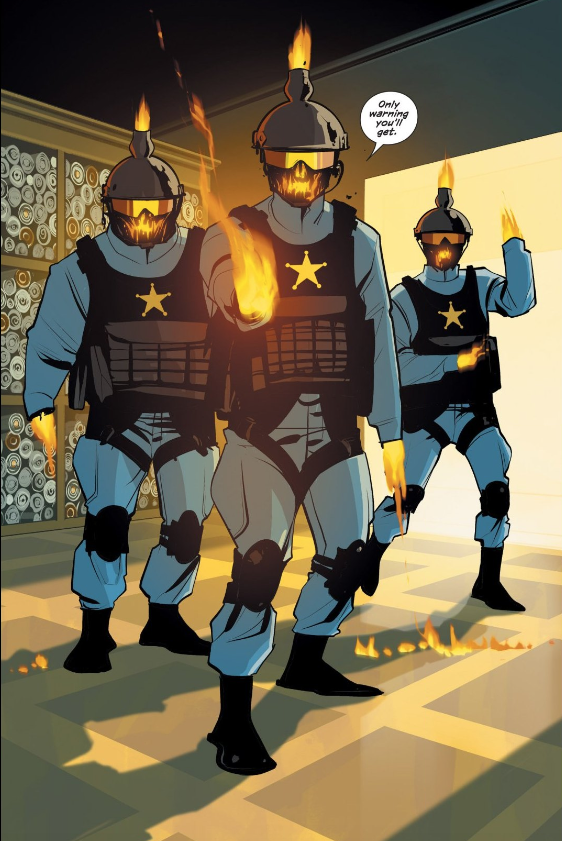Comic of the Week: Dungeons and Dragons - A Darkened Wish #1, another excellent comic based on the RPG
Dungeons & Dragons: A Darkened Wish #1 is out now.
By d. emerson eddy — For some time now IDW has been producing entertaining Dungeons & Dragons comics, with some of the most recent stories following an adventuring party made-up of many pre existing characters from the video games. These books have been largely written by Jim Zub, and the most recent was a hilarious and fitting crossover with Rick and Morty. This new mini-series promises new characters and a new beginning on the Sword Coast of Faern. I suppose it's fitting to set it within the Forgotten Realms campaign setting, since there's a lot of world-building already accomplished, allowing the creators a lot of toys and rules to play with, including some new favorites like kenku, a race of crow-like avians that can mimic the sounds of others.
After starting in the middle of a chaotic battle, B. Dave Walters, Tess Fowler, Jay Fotos, and Tom B. Long flashback to introduce us to a group of adventurers through the point of view of a young wizard, Helene, and her friends as they leave their hometown for the promise of adventure with the White Sails mercenary company. We get some interesting characters in the twins, Karrin and Kerrin, the kenku, Solivigant, and the mysterious dragonborn, Rayonde. Through misadventure following a trip to a tavern, we definitely get the impression that Helene and her friends, new and old, are a bit out of their depth, but still capable at this early stage. Contrasting the formation of the party versus the battle in the present is compelling, hooking us well into trying to figure out what's going on and what happened to move the characters to this point. It's a great set-up for the story and characters, also giving that anticipation for what happens next that you often tend to feel when playing D&D.
What elevates the story even further is the gorgeous artwork from Tess Fowler and Jay Fotos. Fowler is a master of fantasy art, from her work on Rat Queens through to her artwork featuring the characters from Critical Role. She expertly captures and presents unique and captivating designs for human and non-human fantasy characters, giving an immense level of detail when it comes to populating and filling this fantasy world. Just the opening splash page alone gives us a breadth of different and unique attacking forces of Morayans and it only gets more fascinating from there as we're guided through our main cast and finally getting to Mintarn.
Jay Fotos enhances the line art with a rich colorful palette, well-fitting the fantasy setting, with some very nice effects when it comes to depicting magic. The action scenes, in particular, like the opening battle and an early fight with a pack of wolves, show a very nice variety to how Fowler and Fotos are working together to create some visually interesting sequences. Tom B. Long also nicely embellishes the story with some banner-like headers for sequence starts that adds to the feel of the fantasy world.
Overall, I've been impressed with this first issue from Walters, Fowler, Fotos, and Long. It has some richly developed characters and an intriguing hook to see what happens to the party, all with some beautiful artwork.
Dungeons & Dragons: A Darkened Wish #1
Writer: B. Dave Walters
Artist: Tess Fowler
Colorist: Jay Fotos
Letterer: Tom B. Long
Publisher: IDW
Price: $3.99
Check out more of d. emerson eddy’s Comic of the Week feature on our Lists Page.
d. emerson eddy is a student and writer of things. He fell in love with comics during Moore, Bissette, & Totleben's run on Swamp Thing and it has been a torrid affair ever since. His madness typically manifests itself on Twitter @93418.









